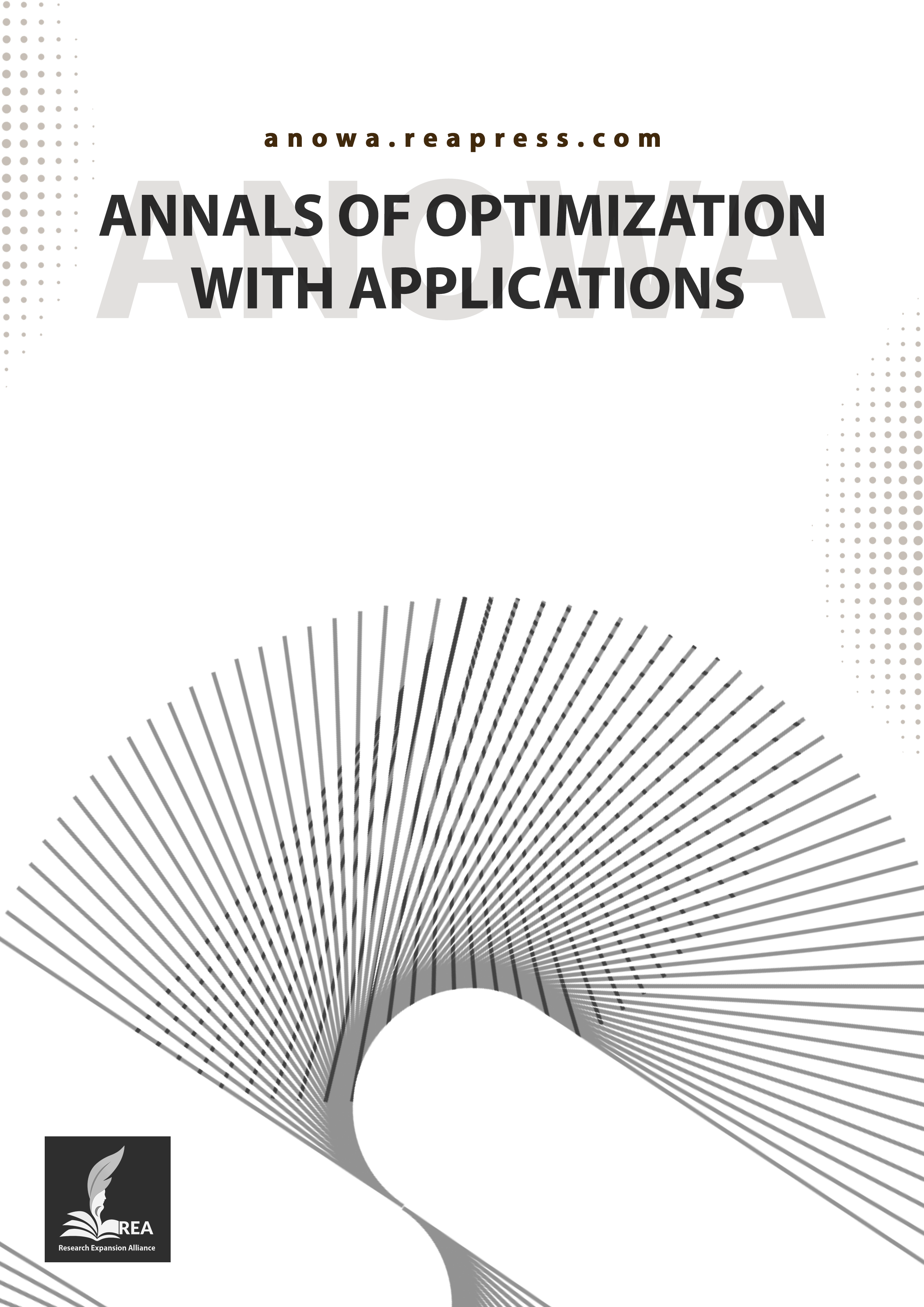Optimizing Hypergraph for Polynomials Modelingwith Redundancy Scheduling
Abstract
In this paper, we consider the minimization of two classes of polynomials over the standard simplex. These polynomials have their variables labeled by the edges of a complete uniform hypergraph, and their coefficients are defined in terms of some cardinality patterns of unions of edges. Data Envelopment Analysis (DEA) is a non-parametric method that aims to use scientific methods to investigate the performance of Decision-Making Units (DMUs). One of the interesting subjects in DEA is the minimization of the empirical error while satisfying some shape constraints, such as convexity and free disposability. In this research, the question is whether these polynomials attain their minimum value at the barycenter of the standard simplex, which corresponds to showing the optimality of the uniform distribution for the underlying queuing problem. The process focuses on the development of an adaptive observer-based Distributed Fault Estimation Observer (DFEO) for multi-agent nonlinear time-delay systems under a directed communication topology. The process involves constructing a fault estimation observer for each agent based on their relative output estimation errors.
Keywords:
Polynomials, Data envelopment analysis, Optimization model, Hypergraph, SymmetricReferences
- [1] Cardinaels, E., Borst, S., & van Leeuwaarden, J. S. H. (2022). Power-of-two sampling in redundancy systems: The impact of assignment constraints. Operations research letters, 50(6), 699–706. https://doi.org/10.1016/j.orl.2022.10.006
- [2] Schrijver, A. (2005). New code upper bounds from the terwilliger algebra and semidefinite programming. IEEE transactions on information theory, 51(8), 2859–2866. https://doi.org/10.1109/TIT.2005.851748
- [3] Charnes, A., Cooper, W. W., & Rhodes, E. (1978). Measuring the efficiency of decision making units. European journal of operational research, 2(6), 429–444. https://doi.org/10.1016/0377-2217(78)90138-8
- [4] Schrijver, A. (2003). A comparison of the Delsarte and Lovász bounds. IEEE transactions on information theory, 25(4), 425–429. https://doi.org/10.1109/TIT.1979.1056072
- [5] Delsarte, P., & Levenshtein, V. I. (1998). Association schemes and coding theory. IEEE transactions on information theory, 44(6), 2477–2504. https://doi.org/10.1109/18.720545
- [6] Doyle, J. R., & Green, R. H. (1991). Comparing products using data envelopment analysis. Omega, 19(6), 631–638. https://doi.org/10.1016/0305-0483(91)90012-I
- [7] Houshyar, E., Davoodi, M. J. S., & Nassiri, S. M. (2010). Energy efficiency for wheat production using data envelopment analysis (DEA) technique., 6(4), 663–672. http://www.ijat-rmutto.com/
- [8] Cook, W. D., Kress, M., & Seiford, L. M. (1996). Data envelopment analysis in the presence of both quantitative and qualitative factors. Journal of the operational research society, 47(7), 945–953. https://doi.org/10.1057/jors.1996.120
- [9] Guerrero, N. M., Aparicio, J., & Valero-Carreras, D. (2022). Combining data envelopment analysis and machine learning. Mathematics, 10(6), 909. https://doi.org/10.3390/math10060909
- [10] Ucal Sari, I., & Ak, U. (2022). Machine efficiency measurement in industry 4.0 using fuzzy data envelopment analysis. Journal of fuzzy extension and applications, 3(2), 177–191. https://doi.org/10.22105/jfea.2022.326644.1199


